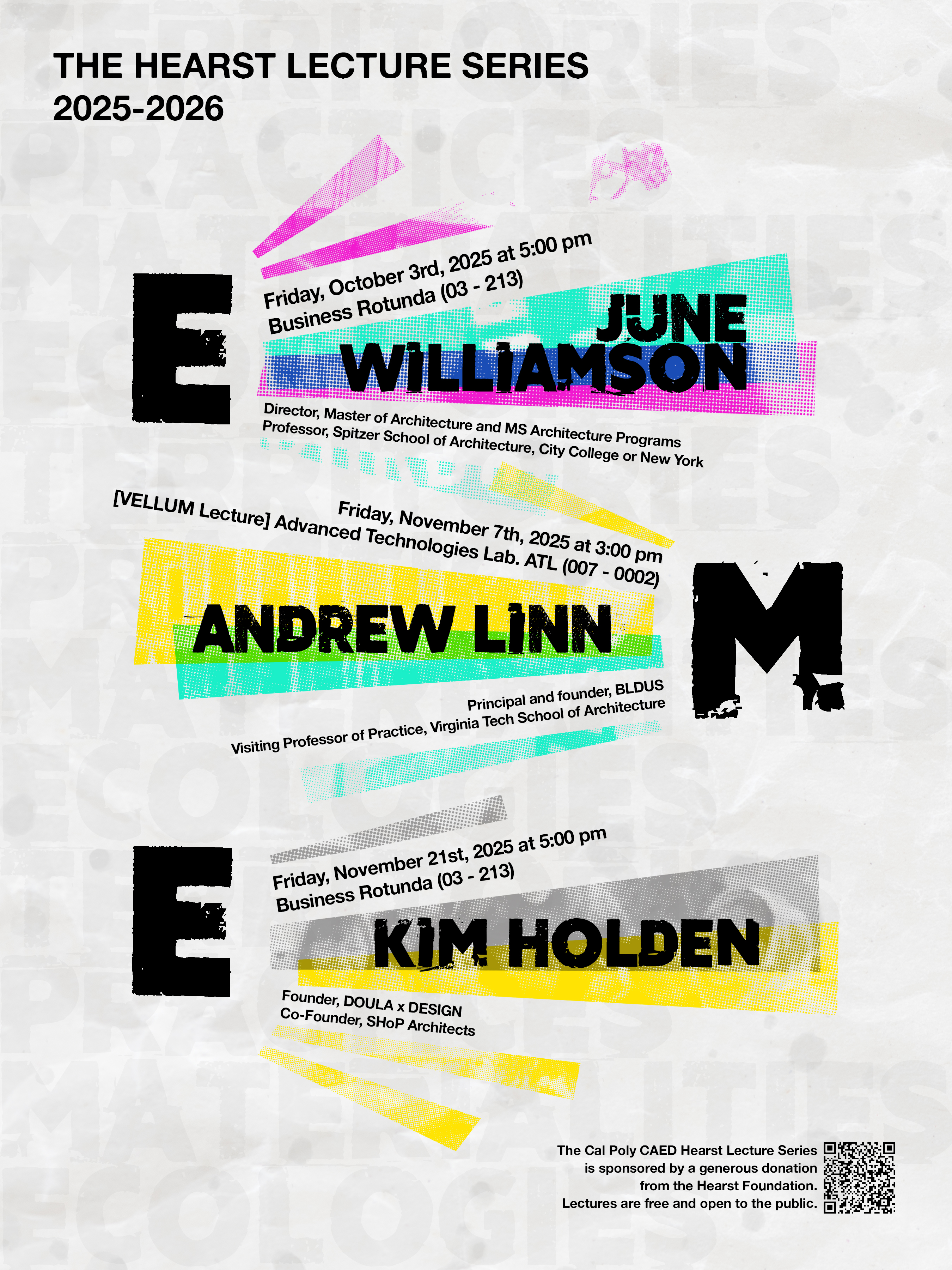‘A Better Understanding’ of Architecture through Studio Field Trips
by Caroline Roistacher
Cal Poly Architecture (ARCH) field trips provide students with invaluable experience. Students get the chance to visit offices in San Francisco and Los Angeles in their first few years, and later participate in engaging practices across the country and even internationally in upper-division studios. During these visits, offices will often take students to construction sites, provide presentations and give feedback to students.
ARCH lecturer Ryan Brockett taught a second-year studio that went to EHDD in San Francisco. He believes that field trips are a great opportunity to expose students to professional life after school that they do not necessarily get exposed to in San Luis Obispo.
“For many of these students, that was their first time in an office,” Brockett said. “So to understand what office culture and life is like, and understand dynamics and relationships within these offices, is very important and eye-opening for the students.”
A lot of firms introduce students to the process of their work in the office. They will often show students their initial work on a project, whether it be modeling or sketches. Then, they walk students through the process of how they got there and who they worked with, often showing students final photos of the built work. Students are also able to meet many different people with different roles. They can engage and observe active work through different lenses, asking questions along the way.
This year, second-year architecture students in ARCH 241: Architecture Technology Fundamentals had the opportunity to partner with WRNS Architecture and Pacific Clay. Pacific Clay and WRNS made a combined gift of nearly $10,000, which was used to bus the students to the plant round trip in one day.
In the course, students learned about all types of heavy earth materials, such as concrete and brick. Students made wood formwork ahead of time and took it to the factory, allowing them to cut custom bricks that they designed. They also got a plant tour and could see the clay mines, the laboratory, the storage and stockpiling area, the conveyor belts, the equipment that makes the bricks and the kilns.

Students are shown around Pacific Clay facilities
Students worked side by side with plant workers for the day. Professor Carmen Trudell joined students on a trip to Pacific Clay in Lake Elsinore. Trudell said many of the manufacturers had worked there for many decades and shared their experience growing through the company.
“It was great in terms of empathy and respect and really putting faces to the people who manufacture the building materials,” Trudell said. “Overall, I think it's about respect for the level of innovation and craft that goes into making something, even something that has been around as long as and seems as simple as a brick.”

Students making their bricks
Ben Mickus is a senior associate and senior architect at WRNS, as well as a Cal Poly alum. The WRNS partnership with Cal Poly goes back many years, with many Cal Poly alumni on the team staying in touch and helping out.
Mickus, who graduated from Cal Poly in 2002, described how one thing most people don’t get a chance to do until they are practicing architects is to see the difference between what is drawn on paper and what that actually looks like on a building.
“Field trips allow that learning and experience to see things in a one-to-one scale early,” Mickus said. “I think a field trip to a manufacturing facility is really the only way to kind of give that experience to the students.”
Elianna Ehlenberger was one of the students on the field trip. Ehlenberger described how she was given the chance to construct clay bricks and how the process of making them was rewarding.
“We had been talking about bricks and the process for the two weeks before, and I think seeing it in person definitely made everything more real and gave a better understanding of what the process is like and what's actually achievable,” Ehlenberger said. “It’s not just reading about it or looking at pictures, you actually get a tangible grasp of what can be done on those types of sites.”
Field trips have a far wider impact on students than traditional learning on campus. However, oftentimes, students must stay behind because they do not have the resources to attend. Funding is necessary to provide transportation and lodging to all students.
“It's unfortunate at times when there are students who need to stay behind because they don't have the financial resources to attend those trips,” Brockett said. “It's just a great experience for everybody to have.”
Studio partnerships are equally beneficial to students and companies. WRNS in particular feels strongly about keeping a connection to academia.
“I think it's it's good for us to keep those conversations going to get new perspectives from the students,” Mickus said. “All of this creativity that we see and different ideas and different questions that get asked by the students are very insightful to us as professionals to see, just as it is insightful for the students to have access to these professional facilities and other architects and fabricators who are helping them do something they haven't done.”

Students with their COMPLETED brick DESIGNS
Join the many donors who have supported ARCH and consider a $10K named studio partnership. Named studios provide firm recognition to over 900 architecture students while providing consistent annual support to allow faculty to plan for co-curricular professional engagement. Most importantly, this support ensures that all students, particularly those with the most financial need, have the same opportunity to engage in these extended field trips and professional engagements beyond the on-campus studio experience.
Gifts, big and small, make an impact. To support co-curricular student opportunities such as field trips, please consider donating by clicking Give Now.



